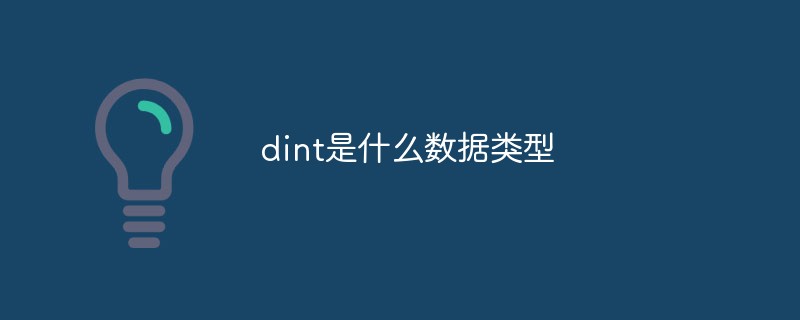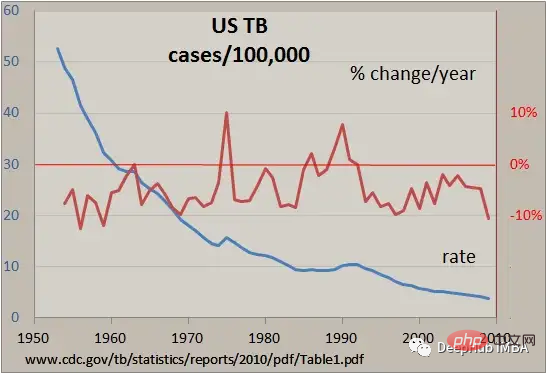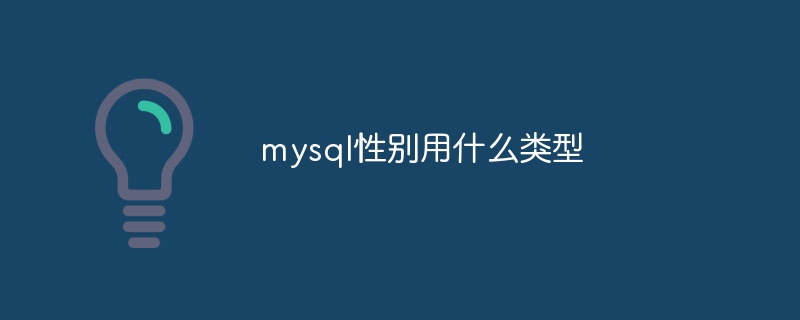 Java
Java javaTutorial
javaTutorial [Java Introduction Notes] Java Language Basics (2): Constants, Variables and Data Types
[Java Introduction Notes] Java Language Basics (2): Constants, Variables and Data TypesConstants and variables
What are constants and variables?
Constants and variables are a memory space used by the program to store data while the program is running.
Constant:
The value of the constant cannot be changed while the program is running. Constants are declared in Java The final keyword must be used. Constants can also be divided into two meanings:
The first meaning is a value. This value itself can be called a constant. Here are a few examples:
Integer constant: 123
Real constant: 3.14
Character constants: 'a'
Logical constants: true, false
String constants: "helloworld"
This is just a matter of saying. For example, for the number 7, we can say "a constant of type int 7"
The second meaning represents an immutable variable. This type is also called a constant. From a grammatical perspective, it means adding final and using the final keyword to modify a variable. Then as long as the value is assigned, it cannot be changed. It cannot be assigned again
//Declare a constant i of int type final int i = 1; //Declare a constant s of String object type, the "Hello" string is also a constant final String s = "Hello";
It should be noted that a constant must be assigned a value when it is declared.
Variable:
is a memory space used to store data when the program is running. It is the most basic storage unit in the program. We can access variables using variable names.
Classification of Java variables:
According to declaration position:
Local variables
Member variables
The parameters of the method are local variables.
public class Test{ int i1 = 1; //Member variables public class static main(String[] args){ //args are the parameters of the method, so they are also local variables int i2 = 2; //Local variables} }
By data type:
Basic data type variables
Reference data type variables
public class Test{ int i = 1; //Basic data type variables String s = new String(); //Reference data type}
Steps to use variables:
Step 1: Declare a variable - open up space in memory according to type Step 2: Assign value - store data in space Step 3: Use variables - get memory The data in
We must declare and assign values before using variables. Declaration and assignment can be separated or combined into one step;
If a member variable is not explicitly assigned a value when it is declared, it will be assigned a value. default value.
public class Test{ int i3; //If it is a member variable, the system will assign a value of 0 by default to it
public static void main(String[] args){ int i1; //Declare i1 = 1; //Assign value int i2 = 2; //Assign a value to it when declaring it. The value 2 is also called a "direct quantity" System.out.PRintln(i1); //Use to output the value of the variable to the Java console} }
Basic data types
Java is a strongly typed language. The so-called strong type means that each variable expression must have a certain data type at compile time. Java data types are divided into two major categories: basic types and reference types.
Reference data types are: class, interface, array. The basic data types in 基java are divided into four types of eight types, which are:
Basic data types
Numerous type
character type Char
occupation space: 2 Byte
Boolean type boolean
Occupied space: 1 bit
Integer type
Floating point type
Byte byte
short integer short
integer int
long integer long
single precision long
double double
1 byte
2 bytes
4 bytes
8 bytes
4 bytes
8 bytes
- 128~127
-32768~ 32767
-2147483648
~2147483647
-9223372036854774808
~9223372036854774807
-3.403E38
~3.403E38
-1.798E308
~1.798
Integer type
Java integer constants default to int type. To declare long type constants, you need to add L at the end.
Three expressions of Java language integer constants
Decimal integers: such as 12, -15, 0
Octal integers: requirements Starting with 0, such as 012
Hexadecimal number: It is required to start with 0x or 0X, such as 0x12
Note: Because hexadecimal value can be assigned in Java, it is similar to decimal 10 and hexadecimal A There is no difference in memory.
After Java 7, you can also use binary method to assign integer values in Java.
byte b1 = 127; //Correct byte b2 = 128; //Error, out of range short = b1; //Correct, assign the value of another variable to this variable, and it does not exceed the range int i1 = 12;/ /Correct int i2 = 012; //Correct int i3 = 0x12; //Correct System.out.println(i2); //Output 10, because i2 is assigned in octal System.out.println(i3) ; //Output 18, because i3 is assigned in hexadecimal long lo = 2147483648L; //Long type declaration needs to be added
Floating point type
There are two types of Java floating point type constants Expression form:
Decimal number form: for example 3.14 314.0 .314
Scientific notation form: such as 3.14e2 3.14E2 3.14E-2
Java floating point type constant defaults to double. If you want to declare a constant as float, you need to Add F at the end because of accuracy issues, so don’t use floating point types for equality comparisons
float f1 = 123; float f2 = 123.4F; double d1 = 1234.5; double d = 3.141_592_65_36 //Correct, in order to make comparisons after java7 Long data is more readable, you can use underscores between numbers
Character type
Character type is a single character enclosed in single quotes
Java characters are encoded in Unicode, and each character occupies two bytes, so it can be expressed in hexadecimal encoding, such as char c = 'u0061';
allows the use of the escape character '' to convert the following characters into other meanings, such as char c = 'n'; newline
Commonly used escape characters in Java
![1482376567164137.jpg [Java Introduction Notes] Java Language Basics (2): Constants, Variables and Data Types](https://img.php.cn//upload/image/130/816/676/1482376567164137.jpg?x-oss-process=image/resize,p_40) char c1 = 'you'; //Correct char c2 = 'Hello'; //Incorrect char c3 = 'u9999'; //Correct System.out.println (c3); //Output '香'
char c1 = 'you'; //Correct char c2 = 'Hello'; //Incorrect char c3 = 'u9999'; //Correct System.out.println (c3); //Output '香'
The Boolean type
is used to store the "true" and "false" types, with only two values: true and false.
boolean b = true;
Data type conversion
Precision sorting: (low to high)
Byte
from low to high The system will automatically convert when high-precision is converted; when high-precision is converted to low-precision, there will be a loss of precision and must be forced to convert; during operation, different types will be automatically converted to high-precision types.
byte b = 127; short s = b; //It will be automatically converted to shortb = (byte)s; //It will not be automatically converted, it needs to be forced to convert
double constant is converted to float constant and cannot be converted when overflow occurs
public class Test {
public static void main(String[] args) throws Exception { double d = 122222222222222222222222222222222222222222222222.3; float f = ( float) d; //The value of d has exceeded the range of float, so the conversion will "overflow" , but no error will be reported during compilation System.out.println(f); //Because overflow occurs, "Infinity" is output }
}
The system will automatically convert the value to int type during operation, and the operation Casting is required when assigning the result to the original type.
byte b1 = 1;byte b2 = (byte) (b1 + 2); //Numeric operations will be automatically converted to int, so after calculating the result, you need to force conversion when assigning the value to the byte type variable b2
If the constant value exceeds the default type, you must add the first letter of the numerical type that is larger than the default type at the end, such as long num=30000000000L; because the integer type defaults to int, but 30000000000 cannot be placed in int, so it must be added at the end Add lowercase l or uppercase L to convert to long type.
(data type name) Variable or value to be converted and Variable or value to be converted + conversion character These two conversion methods are essentially different. The former means that it is its original type in the computer, and then the It is forced to the current type, which means that it was already converted to this type in the computer from the beginning.
long lo = (long)2;long lo2 = 2L; //These two declarations or conversions are essentially different
The above is [Java entry notes] Java language basics (2): constants, variables and data types Content, please pay attention to the PHP Chinese website (www.php.cn) for more related content!
 dint是什么数据类型Sep 05, 2022 am 11:05 AM
dint是什么数据类型Sep 05, 2022 am 11:05 AMdint是带符号位的32位整数类型;dint的表示方法及范围是“L#-2147483648~L#+2147483647”,定义为双整数或长整数,字节是电脑里的数据量单位,在计算机中,数据只用0和1这种表现形式。
 Python时间序列数据操作的常用方法总结Apr 24, 2023 pm 10:22 PM
Python时间序列数据操作的常用方法总结Apr 24, 2023 pm 10:22 PM时间序列数据是一种在一段时间内收集的数据类型,它通常用于金融、经济学和气象学等领域,经常通过分析来了解随着时间的推移的趋势和模式Pandas是Python中一个强大且流行的数据操作库,特别适合处理时间序列数据。它提供了一系列工具和函数可以轻松加载、操作和分析时间序列数据。在本文中,我们介绍时间序列数据的索引和切片、重新采样和滚动窗口计算以及其他有用的常见操作,这些都是使用Pandas操作时间序列数据的关键技术。数据类型Python在Python中,没有专门用于表示日期的内置数据类型。一般情况下都
 mysql性别用什么类型Jun 13, 2023 am 11:33 AM
mysql性别用什么类型Jun 13, 2023 am 11:33 AMMySQL性别采用多种数据类型来表示性别字段,例如CHAR、ENUM等,最终采用哪种类型,取决于实际需求以及数据存储的大小和性能。
 java的数据类型有哪些Jan 30, 2024 pm 03:23 PM
java的数据类型有哪些Jan 30, 2024 pm 03:23 PMjava数据类型:1、整型;2、浮点型;3、字符型;4、布尔型;5、其他数据类型;6、引用类型;7、原始类型与封装类;8、自动装箱与拆箱;9、可变参数;10、注解;11、枚举;12、原始类型和引用类型的选择。Java是一种强类型语言,因此每种数据都有其固定类型。
 decimal是什么类型Mar 18, 2021 pm 04:03 PM
decimal是什么类型Mar 18, 2021 pm 04:03 PMdecimal是MySQL中存在的精准数据类型,语法格式“DECIMAL(M,D)”。其中,M是数字的最大数(精度),其范围为“1~65”,默认值是10;D是小数点右侧数字的数目(标度),其范围是“0~30”,但不得超过M。
 MySQL数据类型详解:你需要知道的知识点Jun 15, 2023 am 08:56 AM
MySQL数据类型详解:你需要知道的知识点Jun 15, 2023 am 08:56 AMMySQL是世界上最流行的关系型数据库管理系统之一,因其可靠性、高安全性、高扩展性以及相对低的成本而得到了广泛应用。MySQL的数据类型定义了各种数据类型的存储方式,是MySQL的重要组成部分。本文将详解MySQL的数据类型,以及在实际应用中需要注意的一些知识点。一、MySQL的数据类型分类MySQL的数据类型可以分为以下几类:整数类型:包括TINYINT、
 表中字段的数据类型有哪些Jan 19, 2021 am 10:18 AM
表中字段的数据类型有哪些Jan 19, 2021 am 10:18 AM表中字段的数据类型有:1、二进制类型,包括Binary、Varbinary、Image;2、字符串类型,包括CHAR、VARCHAR、TEXT等;3、Unicode数据类型,包括Nchar,Nvarchar和Ntext;4、日期和时间数据类型,包括DATE、TIME、YEAR等;5、数值数据类型,包括INT、FLOAT、BIGINT等;6、货币数据类型;7、特殊数据类型等等。
 PHP8中支持的新数据类型可以让你的代码变得更加清新Jun 21, 2023 am 11:20 AM
PHP8中支持的新数据类型可以让你的代码变得更加清新Jun 21, 2023 am 11:20 AM随着PHP8的发布,这个流行的编程语言引入了新的数据类型,这些新类型可以大大简化代码并提高代码的可读性。在本文中,我们将介绍PHP8中的四种新类型:联合类型、命名参数、只读属性和允许为空的属性,并解释它们如何为开发者带来更好的编程体验。联合类型联合类型是PHP8中引入的一种新类型,它可以让开发者在一个变量中存储多种不同类型的值。例如,一个变量可以


Hot AI Tools

Undresser.AI Undress
AI-powered app for creating realistic nude photos

AI Clothes Remover
Online AI tool for removing clothes from photos.

Undress AI Tool
Undress images for free

Clothoff.io
AI clothes remover

AI Hentai Generator
Generate AI Hentai for free.

Hot Article

Hot Tools

Dreamweaver Mac version
Visual web development tools

VSCode Windows 64-bit Download
A free and powerful IDE editor launched by Microsoft

MinGW - Minimalist GNU for Windows
This project is in the process of being migrated to osdn.net/projects/mingw, you can continue to follow us there. MinGW: A native Windows port of the GNU Compiler Collection (GCC), freely distributable import libraries and header files for building native Windows applications; includes extensions to the MSVC runtime to support C99 functionality. All MinGW software can run on 64-bit Windows platforms.

PhpStorm Mac version
The latest (2018.2.1) professional PHP integrated development tool

SAP NetWeaver Server Adapter for Eclipse
Integrate Eclipse with SAP NetWeaver application server.





